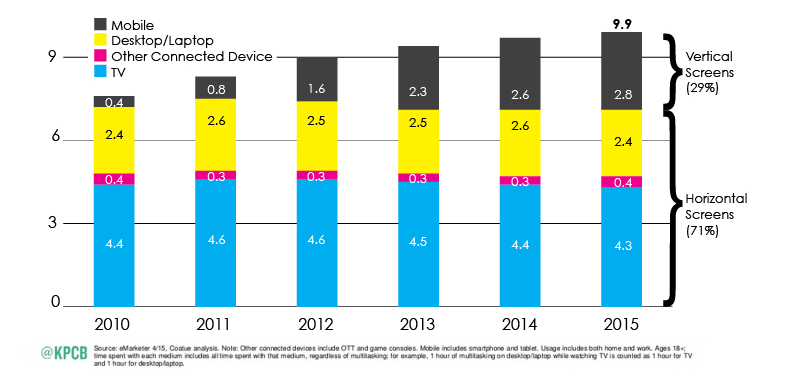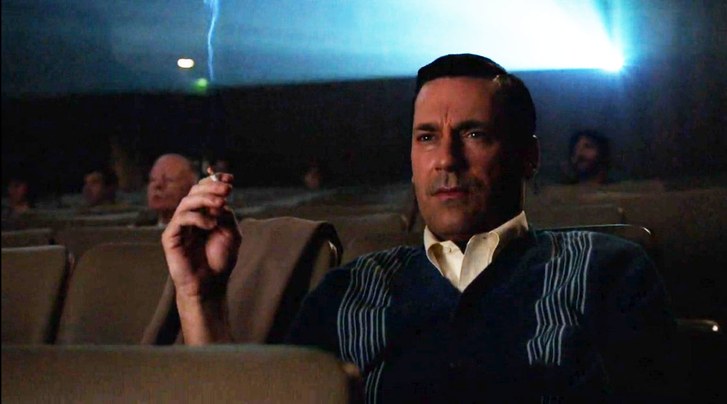How Can Live Videos Help You Get Leads
Use teasers
“To attract potential leads, promote your live video with a catchy title or appealing topic. Then as you cover the topic in the video, structure the presentation so it leads viewers into your marketing and sales funnel and takes advantage of the interaction that live video offers,” wrote Social Examiner.
When you structure a live video, you want viewers to stay until the end when you pitch your product or service. Therefore, make sure you give them an introduction and explain what you plan to discuss, offering them a hook to what they might miss if they don’t watch until the end. That will keep them connected and wanting to hear and see more.
Landing pages
Landing pages are meant for conversion. But that can only happen if the videos on them are able to attract their target, by being catchy and engaging. Video can help you do this by luring people in through humor or captivating storytelling. Videos are 12 times more likely to be watched than text is to be read. By creating an interesting video you will be able to keep the people longer on your landing page and convince them to continue on to the rest of your landing page content.
The best practice for capturing leads when using promotional videos on landing pages is to use a call-to-action (CTA) or auto-redirect. A CTA at the end of your video invites viewers to take the next step and an auto-redirect sends viewers to the rest of your landing page immediately upon completion, thus giving them the opportunity to further engage with your brand.
YouTube Annotations and other forms of pop-out CTAs are great additions to make sure your viewers are engaging with your content. You want your viewers to take action, and including these elements during a video is a great way to engage them in the moment—for example, if you are discussing a particular service or product and that annotation text link pops up right at that moment. Moreover, this is a great way to link people to other content you want them to view.
Offer demos of your products
One-off demo videos represents a great way to answer a question or highlight a specific product feature while engaging with leads in a personalized, helpful way. And more than anything, they are a really effective way of interacting.
Product videos are some of the most commonly produced and most frequently viewed videos. Rather than just capturing the standard information of name, company, email address, and phone number, use these types of videos, instead, as opportunities to learn more about your prospects. as the ultimate goal is to capture information that will help you to better qualify your leads. In order to succeed at that chapter you must make sure your videos contain interactive elements such as survey questions or polls, that will encourage your target to engage more.
Ask your audience to respond through a live chat bar, as this will give you the opportunity to see if they’re interested in the product or service you have to offer. This tactic will help you follow up with the right people after the live video ends and make more sales.
Offer educational, high-value content
People are drown to great content,from which they can learn more. Don’t make your live video just a sales pitch, make sure that at the end of the day the people watching are left with great pieces of information. That will make them come back to you over and over again.
Give discounts
Videos sale better than images, just as images sale better than plain texts. Therefore, don’t forget to offer people discounts if you are promoting a product or a service. This is a great way to attract new consumers, but also to keep the ones you already have. By giving the discounts only to the people watching the live video, it also offers them the feeling of exclusivity we all crave for.
All you need to know about autoplay video in Pinterest ads
Pinterest’s Promoted Video ad units, introduced on August 2016, went on auto-play in 2017. The new type of Promoted Video begins playing as soon as users scroll across it in their feeds, and these ad units will also auto-play in Pinterest’s search results.
“Pinterest has had to make the argument to advertisers that its 175 million users behave differently on Pinterest when compared to Facebook and Google, or even Twitter and Snap. Pinterest users come to the site and dig through products and recipes, among other things, for ideas. They then search deeper into topics, save them, and then eventually in theory acting on them later — either by cooking the dish or buying a product. Pinterest’s pitch is that unlike Facebook and Google, which can offer a compelling ad product for one point of that part of a customer’s buying life, it can offer products across the whole timeline,” wrote TechCrunch.
Moreover, said AdWeek, “Pinterest announced that Nielsen Mobile Digital Ad Ratings will measure audience reach of campaigns using Promoted Video with auto-play, while Moat will provide data on viewability, or how much of the videos were in view. They join existing measurement partners Millward Brown for brand lift and Oracle Data Cloud to measure the impact on offline sales”.
According to Pinterest’s Business page, Promoted Video delivers dramatic results, including lifts in brand awareness and favorability. Plus, using Promoted Video to show your ideas in action produces big gains in intent to act. “With 80% of Pinners using mobile devices to access our platform, it pays to use Promoted Videos, a naturally engaging format that can quickly capture the interest of this on-the-move audience,” concludes the post.
How relevant is still TV for your brand?
We are smarter and smarter consumers, more up-to-date with everything that is new and happening in the world of technology, people constantly changing and improving their laptops, mobile phones and software that they are using. Moreover, 2017 proves to be the first year that the media investments in digital are surpassing the TV ones. In this context, it’s only natural for a CEO or a marketing specialist to wonder how relevant is still TV for the brand they are taking care of?

In other words is video killing the radio star? Or is it a non-subject that the specialists are over-exaggerating talking about? What do you think? Well, this is what we think.
First of all we believe that there is not a general answer of yes or no. The right answer for your brand will come from your target: who are they, what are their consumption preferences, their passions, hobbies, desires, etc. Better knowing your target will give you the right answer. Because if you are looking at the younger generation the answer is pretty easy, but if you are targeting the Millennials or the older generation you will have for sure another look at the situation and things will not seem that much black and white.
Along with the channels and devices available for watching TV, the ways for brands to reach consumers through the medium are proliferating. Quoted by Marketing Week, Otto Rosenberger, CMO at Hostelworld.com, believes that TV buying is changing, and with good reason. He says: “It really always starts with being obsessed about where the customer is. It’s about where they are and what drives them, which drives our creative and media decisions.” Research released by Ofcom earlier this month shows that while live television remains hugely important, catch-up TV viewed via the internet and programming premiered online are taking up an increasing share of viewing time for younger audiences in particular. It reveals that today, only 50% of 16- to 24-year-olds’ TV consumption is through live television, rising to 61% for 25-to 34-year-olds.
“The overarching shift, therefore, is in the power of technology and the internet. It is not only changing the way people watch TV, it is also creating a significant change in the way TV advertising is being traded towards targeting specific segments of audiences known to be watching rather than programmes that research panel data suggests they might see,” explains Marketing Week.

Not a long time ago, Turner Broadcasting and Horizon Media partnered on with marketing-analytics company MarketShare, which meta-analyzed thousands of marketing optimizations used by major advertisers from 2009 to 2014. MarketShare’s analysis found that TV advertising effectiveness has remained steady during that time period and outperforms digital and offline channels at driving key performance metrics like sales and new accounts. The study also showed that networks’ premium digital video delivered higher than average returns when compared with short-form video content from non-premium publishers. More on the main results you can read here.
Moreover, we need to think about the fact that a deep investigation of the decision journey often reveals the need for a plan that will make the customer’s experience coherent—and may extend the boundaries of the brand itself. The details of a customer experience plan will vary according to the company’s products, target segments, campaign strategy, and media mix. But when the plan is well executed, consumers’ perception of the brand will include everything from discussions in social media to the in-store shopping experience to continued interactions with the company and the retailer.
“Consumers’ perception of a brand during the decision journey has always been important, but the phenomenal reach, speed, and interactivity of digital touch points makes close attention to the brand experience essential—and requires an executive-level steward. At many start-ups the founder brings to this role the needed vision and the power to enforce it. Established enterprises should have a steward as well. Now is the time for CMOs to seize this opportunity to take on a leadership role, establishing a stronger position in the executive suite and making consumers’ brand experience central to enterprise strategy,” said David C. Edelman for Harvard Business Review.

A study done by Arris showed that 84% of respondents wanted to fast forward through the ads they watch, while 60% of them download or record shows so they can skip commercials. Even Super Bowl ads have lost their effectiveness: a 2014 study showed that 80% of them do not increase sales for the companies running them. The increased use of smartphones and tablets also detracts from TV commercials’ relevance. A study in May 2015, quoted by The Guardian, showed that researchers found that viewers who focused just on the TV screen were able to recall 2.43 out of every three brands mentioned, while smartphone and tablet users only managed to recall 1.62 on average.
Moreover, advertising’s even losing its role as an information source: a study by Mindshare earlier in 2015 showed that the percentage of Americans who said advertising helped them learn about products and services dropped from 52% in 2005 to 41% in 2014.
Still, all in all, TV is still relevant and will still be as long as the brands will know how to adapt to the new changes it brings and will know how to showcase its added value. As long as the TV advertising will continue to adapt and become better and more relevant for its audience, it will of course remain very important.
On how brands can optimize their TVCs to drive product discovery, you can read here.
Best packaging ideas for 2017
In the very competitive and full of inspiration and imagination year such as 2017, a good product is not enough for it to become a brand and capture the consumer’s attention. Let alone make him/ her choose it from the numerous similar products on the shelf and lead to a future buy. Therefore, a great packaging design, in sink with the product’s qualities, characteristics and what it stands for, will mark the path to a successful rise and growth of a brand.
Here are some of this year’s main packaging design trends and ideas:
1. Back to basics. Simple, bold and clear
source: skinn.be
This year, the trend is better articulated and more compelling to the customer. Minimizing the elements used in a package design can elevate a product… as long as it gets the point across. In our fast-paced world, shoppers don’t always have the time to study each and every product detail. Sticking to the essentials and making sure the buyer will make a more informed decision, a clean-cut design can convey information and make a product shine using simplicity.
According to thedieline.com, the designers understood the purpose of the object and the thought process of their audience. In service of this, they simplified the message and stated it clearly and boldly across the face of the packaging. These designs are text-based and say what they are in no uncertain terms. They realize the value of a simple message in today’s crowded world. The simplicity does not come off as lazy or incomplete but refreshing and honest. This is the manifestation of the idea: clarify not simplify. These designs identified exactly what the customer was searching for and expressed it simply. It comes off as powerful and trustworthy.
source: tapped
2. Putting focus on the custom lettering
Almost every designer loves to get crafty and create some of their artwork by hand. According to Martin Lupus of 99designs.com this thing happens in order to get the organic effect: fluid imperfections—like irregular lines or natural texture fills— that can make a product stand out through warmth and set it apart from digital designs. “This warmth can create an emotional tie to the product, making it feel handmade and wholesome, or communicating a feeling of nostalgia. Either way, for 2017, we are seeing a massive comeback of hand-lettering,” added Lupus.
source: sweetyland
3. Letting geometry rule!
source: thedieline
Hand in hand with the previous trend, this theme is centered around expressing simplicity, approachability, and honesty through patterns and shapes. Circles, triangles, and squares are, as the specialists consider, an attempt to treat the mindset of a weary, overwhelmed consumer. Particularly in industries with over-the-top design, these reduced approaches standout. Familiar shapes, colors, and patterns communicate an awareness of the world and a sensitivity to the consumer.
- Old school with a twist
The past is haunting us, but in a good way, through a “idealization of the past—a longing for simpler times when things were cared for, made by hand, and detail-oriented”, as Grant Wenzlau from dieline.com would say. But these designs are not simply regurgitating old forms and techniques, they are modernizing them and combining them in new ways. “This new take on what is old is refreshing because it selects the best parts of different periods of our history and juxtaposes them. These designers realize the increasing rareness of endangered techniques like calligraphy, letterpress, and foiling. These artisanal practices grow more and more desired each year. In the mind of the consumer, they are increasingly novel and related to greater value. But far from merely being historical, these techniques are being re-imagined in the context of mid-century layouts and applied to a 21st Century, cutting-edge materials”.
source: ACH Vegan Chocolate
source: cocktail kit
Moreover, vintage package design brings back memories for people who lived through the original era and satisfies the curiosity of younger generations eager to explore the past. The key to going vintage is to find a balance.
5. Making the color a focus and priority
Colors evoke emotions and affect purchasing decisions. Because of this, color has always been one of the most important choices in packaging design, presenting in new, exciting ways. Bright colors and vibrant associations are beginning to make a scene on store shelves. More than that the colors and their special use are able to differentiate the packaging and the product at the shelf, making it to stand out and attract the consumer that will always choose exciting over common and boring. Also, it is proven that the consumer will always remember a product that is interesting and has the wow visual factor.
source: Pyramida
source: Resonance
6. Be playful and multi-functional!
In each of us lays a child and we love to be given the opportunity to loose ourselves from time to time. So does the consumer. He appreciates a good, interesting packaging that can be joyful, playful and multi-functional.
source: Monstea
7. Repeating a pattern
source: Helmes Workshop
We learn and remember through patterns, as our brain is built that way. Using well-chosen and beautiful patterns can also elevate a package design from ordinary to ethereal. Although the idea of repetitive shapes might seem simple, the technique can be dynamic and compelling when used correctly. Moreover, as it happens in writing a book or a play or a song, repeating a visual motif that captures the essence of the brand sends a strong message. Whether the pattern is bold or playful, patterning the package can create a strong identity that customers will always remember.
8. Storytelling & narrative
source: Smith & We All Need Works
People love stories and, as previously said, having a story behind everything one does it’s always a plus, giving it authenticity and creativity, at the same time. We seek out and cherish the stories that feel closest to our hearts, therefore the packaging design are starting also to incorporate narrative illustrations, trying to get closer to the consumer’s empathies and emotions. The place where the real sale and conviction start.
9. Putting it in the mail
source: Luxembourg
Internationally, there’s a strong comeback for the print and its values, for going to back to the roots, the life before the online. Coffee shops that are inviting their costumers to stop using the wifi and talk to each other, online magazines that are starting to get their first printed versions, people choosing books over kindles, etc. With faster, more efficient ways to communicate, the joy of receiving a letter via the post, in the real mail, not online, has started to disappear over the years. But there is a new trend that will take people back to that feeling. According to the specialists from 99designs.com, the packaging design is here to save the day with an emerging postal trend.
10. Going eco-friendly
The years to come will be more and more about sustainability. According to packaginginnovation.com, the new trends are about using green padding materials, with biodegradable bubble wrap and recycled paper being perfect eco-friendly alternatives. “One of the leaders in sustainable design, method sells bottles made with recycled ocean plastic. From using more renewable resources to keeping materials recyclable, more consumer brands are integrating eco-friendly design into their business. This is a trend that we hope to see grow with each year because it benefits everyone,” also added and concluded Martin Lupus.
source: Grow With Me
Tips & tricks on how to create a successful video campaign on Facebook
Today is all about finding your vision and place on the market and targeting it the right way. Specific messages are created and translated in a specific way, for each media in part. What works for YouTube may very well not work on Facebook or cinema. Even if we talk about the same brand, campaign, positioning and target. So how does one create a powerful and successful video for Facebook, in order to really help the brand?

According to kissmetrics.com, over three billion videos are watched on Facebook daily. Video is eye-catching and engaging and, when used properly, is a great way to bring life to a product or brand. The website editors identified 4 main rules that you can find here. (credit photo: Shutterstock)
As Facebook says, while video continues to grow as a storytelling medium for people and brands, it has been working with hundreds of businesses on building and analyzing video ads to discover what makes great video creative. What they found was that, like advertising of all kinds, building effective video ad creative requires both art and science.
Some rules that would anyone help create a good Facebook video are:
- Tailor your story to your audience.
People are more likely to pay attention to content that’s relevant to their interests, which means you’ll likely get better results if you customize your ad’s message for the people who see it. Consider creating unique videos (or different versions of the same video) for different audience segments.
- Invest in production.
Whether you use a camera phone or a production team, secure the best available creative resources and set a realistic production schedule and budget. People are more likely to watch and remember videos that are well-crafted and designed to play on every device. Remember, cheap doesn’t sell anymore and doesn’t give the “authenticity” feel anymore. Treat the channel with the proper respect and attention and you will get the wanted results.
- Make sure people will relate to the story, by keeping it real and close to them. Use situations that feel close to people’s lives and habits.
- Use the first few seconds wisely.
Bring your story to life quickly, so as people scroll through News Feed looking for content, your video ad quickly piques people’s interest. Consider showing brand or product imagery in the first few seconds. Almost half of the value of a video ad is delivered in the first three seconds, according to research that Facebook commissioned from audience ratings and research company Nielsen. Seventy-four per cent of the value of a video ad is delivered to the audience in the first 10 seconds.
- Focus on storytelling.
Video length is less important than telling a cohesive and concise story. Your video ad shouldn’t be longer or shorter than it takes to tell your story well, so create a storytelling arc from the first frame to the last that keeps your audience interested along the way.
- Create empathy / entertain them / make them laugh or cry.
Everyone feels close to a good, real story that captivates them and brings their emotions to the table.
- Tell your story with and without sound.
Since videos on Facebook autoplay with sound off, it’s important to make sure your video ads entice viewers even when muted. When sound is off, beautiful imagery and on-screen text can help tell your story. When enabled, your video’s sound should offer additional value to viewers and further bring your story to life.
- Use the Groups section
Meeting friends, and sharing your life with those friends, is the business of Facebook. The platform’s ‘Groups’ video perfectly portrays how it helps people connect with others who share similar interests. It creatively identifies how users can benefit from using Facebook by providing a clearly defined problem and a beginning, middle, and end.

